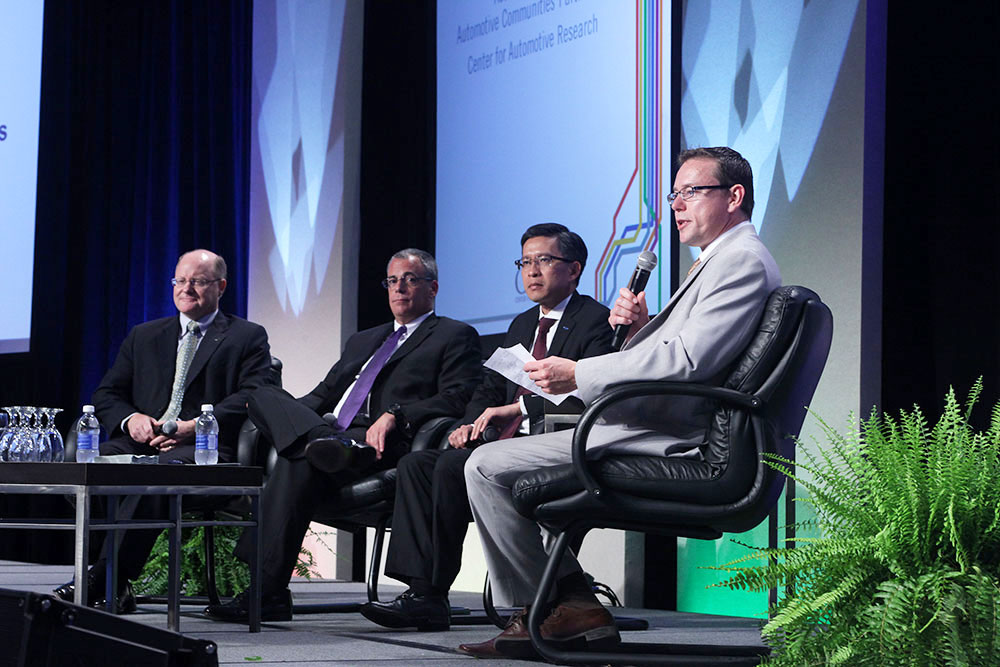Research, Salesmanship Equal Priorities for AutolivResearch, Salesmanship Equal Priorities for Autoliv
“We have preferred-partner status on what we are doing today,” Autoliv America President Steve Fredin says. “But we are also investing in new things. We are in a box. They say, ‘You are a seatbelt supplier, why talk to us about a radar system?’”

TRAVERSE CITY, MI – Even for a trusted supplier on a manufacturers’ approved list, it isn’t easy to break into new territory, says Steve Fredin, president of Autoliv America.
The Sweden-based automotive supplier is a $9 billion company and a global leader in passive-safety equipment such as airbags.
“We have preferred-partner status on what we are doing today,” Fredin tells an audience at the CAR Management Briefing Seminars here. “But we are also investing in new things. We are in a box. They say, ‘You are a seatbelt supplier. Why talk to us about a radar system?’
“We don’t get to the table.”
Strategically, Autoliv wants to become much bigger in active safety, and it has made acquisitions in recent years that have started to pay off. Since having early success mainly with German luxury automakers, the company now is “willing to take risks to introduce new technologies.”
Autoliv is No.1 or No.2 in development of rear-facing radar, with projects at Daimler, and is No.1 for night vision with its technology at BMW, Fredin says, adding, “We have a project with forward-facing camera vision.”
But when his sales teams approach Chrysler, they are told the automaker already has three suppliers of active-safety systems. At Toyota, they learn the work has been given to its trusted ally and subsidiary Denso.
Although Autoliv sales efforts have met some cold shoulders, the company is on the radar of larger companies in the active-safety space. Jeff Owens, executive vice president and chief technology officer at Delphi, showed a slide earlier in the week listing Autoliv with Delphi, Robert Bosch, Continental and TRW as the major players, while omitting Denso.
However, Fredin says, “It is not easy to go against larger companies.” In some parts of the industry, automakers “don’t have the money to work on the new ideas that we want” because they are investing in projects such as powertrain.
Active-safety programs such as automatic emergency braking and adaptive cruise control with lane centering are becoming more popular, and in Europe some active safety is required for a car to win a 5-star rating in the EuroNCAP tests used by some consumers to rate potential purchases.
In addition, the sensor technology required for active safety will migrate to the further development of autonomous vehicles.
“How can we be considered for technologies that are not in the mindset of our customers?” Fredin says during a panel session including Hau Thai-Tang, group vice president-global purchasing for Ford, and Bob Young, vice president-purchasing for Toyota Motor Engineering and Mfg. North America. “We want to bring to the table everything we can offer.”
Neither Thai-Tang nor Young respond directly to Fredin’s criticism. But both say if a supplier believes it has a good idea but is being filtered out of consideration by the buyers, it should call or e-mail the top executives.
“At the end of the day, we want Autoliv to be successful, grow and prosper,” Young says. Thai-Tang adds Autoliv’s goals of saving lives, zero defects and leveraging a global footprint perfectly conform to Ford’s strategic goals of quality, safety and global growth. “Strategic alignment is a strong building block for a collaborative relationship.”
Fredin says supplier-customer relationships have been improving in general, and it is easier to have a relationship in which risks and rewards are shared.
Meanwhile, development goes on. Fredin says Autoliv often is involved in research with customers that resembles science projects, some of which turn out to be great successes. But the supplier isn’t always given enough access to the automaker’s thinking.
Among the many projects in various stages of development, he says, is a search by a blue-ribbon panel in the U.S. for a non-intrusive way for a car to detect that a driver has had too much to drink.
About the Author
You May Also Like